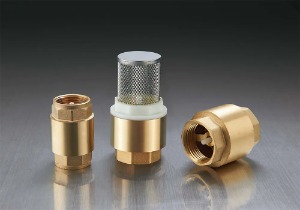2025-10-03
Brass bibcocks are widely used because they provide reliable water control while resisting corrosion and wear. They are typically installed in kitchens, bathrooms, gardens, and outdoor areas, providing convenient access to water for washing, irrigation, or general use. Brass, as a material, is valued for its strength, corrosion resistance, and antibacterial properties, making it an choice for water fixtures. Selecting the appropriate bibcock ensures consistent operation, water efficiency, and durability, reducing the need for frequent maintenance or replacement.

Key Characteristics of Brass Bibcocks
Several characteristics define the performance and suitability of brass bibcocks:
1. Material and Build Quality
Brass bibcocks are constructed from high-quality brass alloys, often mixed with copper and zinc. This combination provides strength, corrosion resistance, and resistance to high temperatures. The durability of brass ensures that the bibcock maintains its shape and function over time, even under frequent use or exposure to water with varying mineral content. High-quality brass also prevents rust formation and prolongs the fixture’s lifespan.
2. Valve Type and Mechanism
Brass bibcocks come with different valve types, including compression, ball, ceramic disc, and quarter-turn valves.
Compression valves: Operate by tightening or loosening a washer, ideal for simple water control.
Ball valves: Provide easy on/off control with minimal effort and durability.
Ceramic disc valves: Offer smooth operation, precise control, and long-term reliability.
Quarter-turn valves: Allow quick water flow control with a simple 90-degree turn.
3. Design and Size
Bibcocks are available in various designs, including wall-mounted, garden, and sink-mounted models. The size of the bibcock determines water flow rate and compatibility with pipes. Spout length, thread size, and handle design also affect usability and convenience. Selecting the correct size and design ensures proper installation and efficient water flow.
4. Thread Type and Connection
Bibcocks may feature different thread types, such as BSP (British Standard Pipe) or NPT (National Pipe Thread), to connect with standard plumbing pipes. Proper thread type ensures a secure, leak-free connection and simplifies installation.
5. Surface Finish
The surface finish of a brass bibcock contributes to its appearance and maintenance. Common finishes include polished brass, chrome-plated, nickel-plated, or matte finishes. Smooth and polished surfaces are easy to clean, resist tarnishing, and maintain aesthetic appeal over time.
6. Durability and Maintenance
Brass bibcocks are known for their long service life and low maintenance. Regular cleaning and occasional inspection of washers or seals help maintain performance. Resistant to corrosion, rust, and high water pressure, brass bibcocks provide reliable operation in both indoor and outdoor environments.
How to Choose a Brass Bibcock
Selecting the right brass bibcock involves considering application, functionality, and installation requirements:
Determine the Application: Choose a wall-mounted, sink-mounted, or garden bibcock based on usage location.
Select Valve Type: Compression, ball, ceramic disc, or quarter-turn valves should match desired water control and durability needs.
Consider Material Quality: High-quality brass ensures resistance to corrosion, rust, and high temperatures.
Check Size and Design: Ensure compatibility with existing plumbing and sufficient spout length for intended use.
Review Thread Type: Select BSP, NPT, or other thread standards to match pipe connections.
Assess Surface Finish: Choose a finish that is visually appealing and easy to maintain.
Plan for Maintenance: Opt for designs that allow easy access to washers or seals for periodic maintenance.
Applications of Brass Bibcocks
Brass bibcocks are versatile and commonly used in:
Residential kitchens and bathrooms for controlled water access
Gardens and outdoor areas for irrigation and washing
Industrial or commercial settings where durable water fixtures are required
Public facilities and parks for reliable water supply